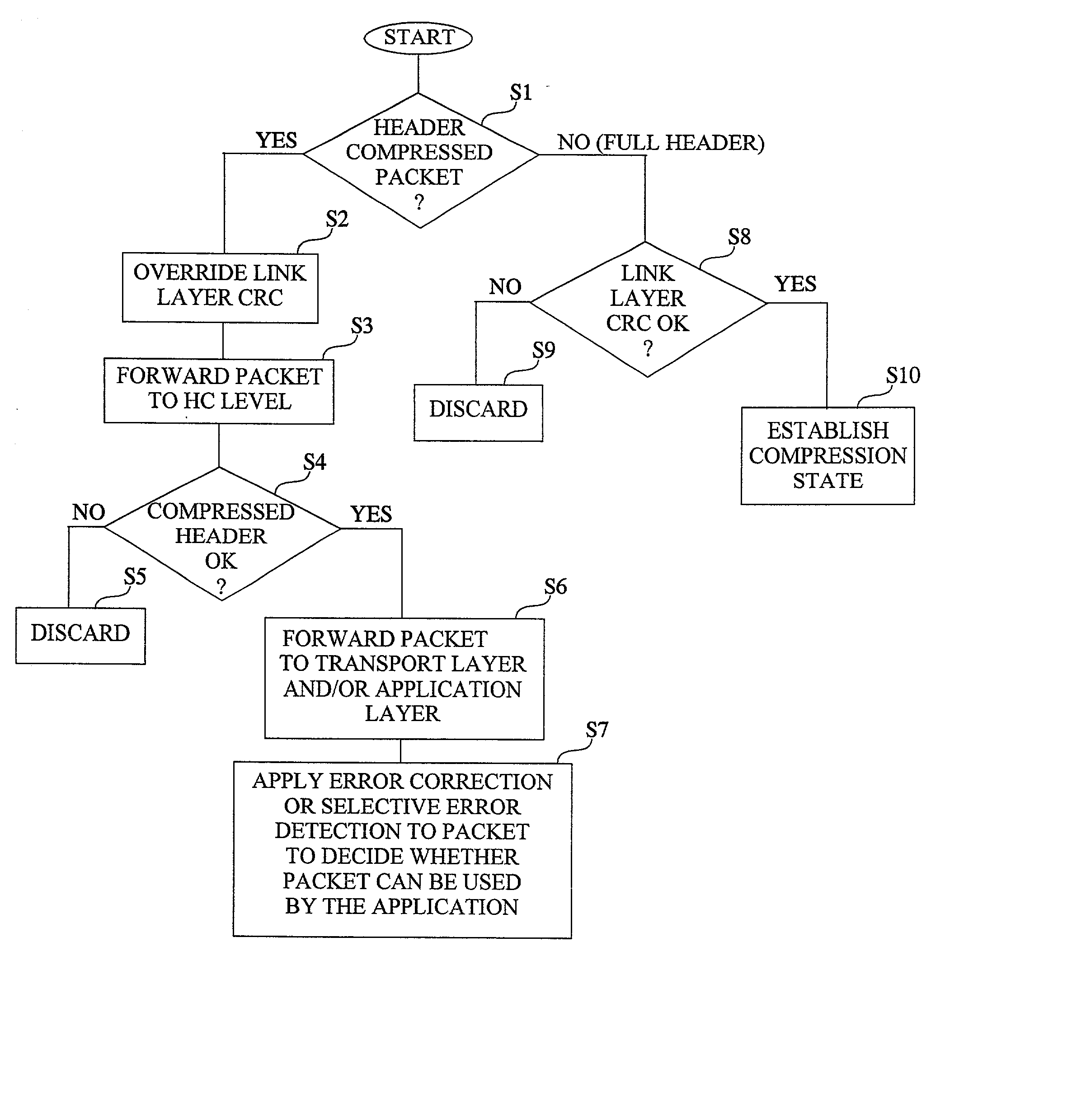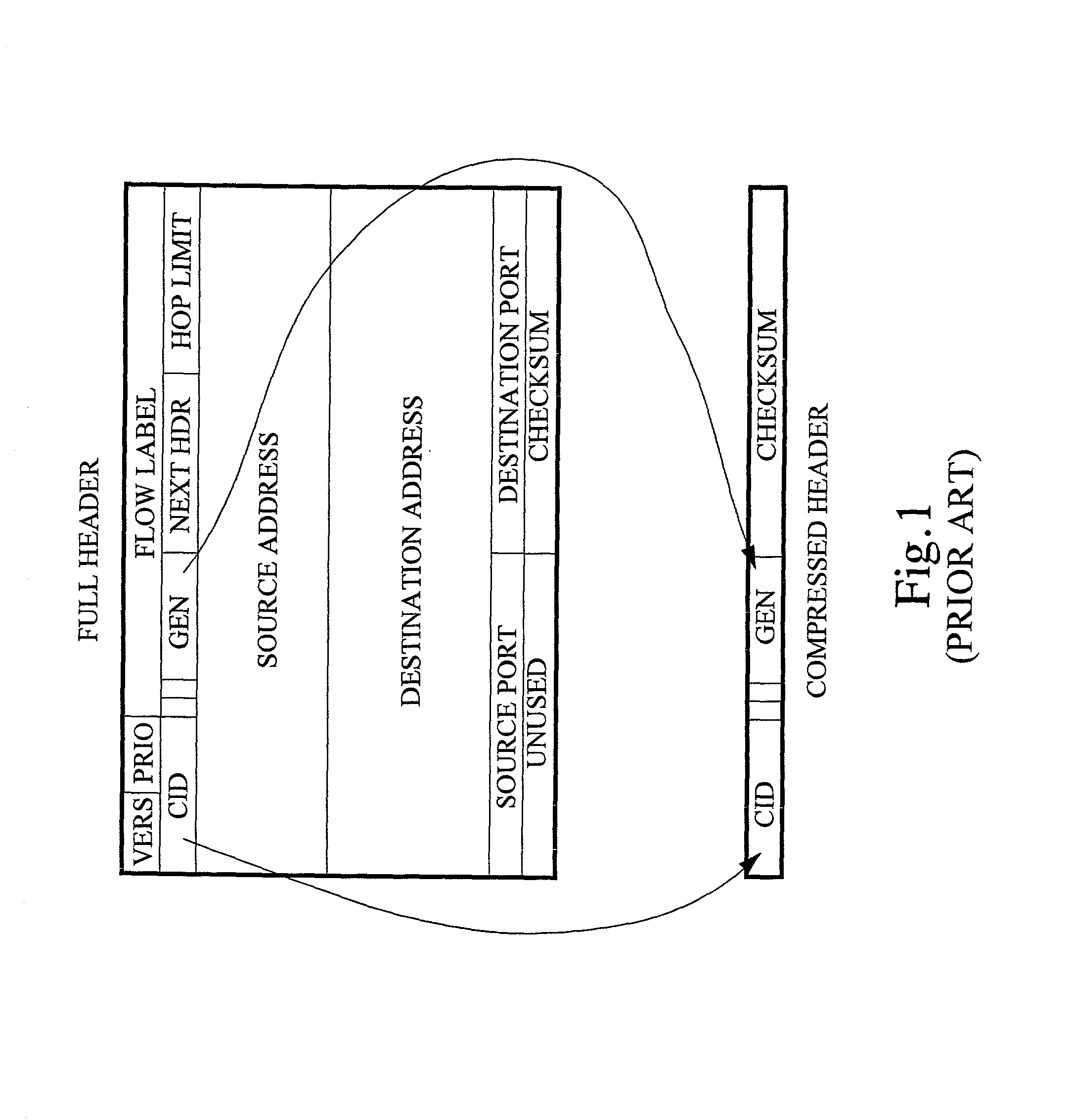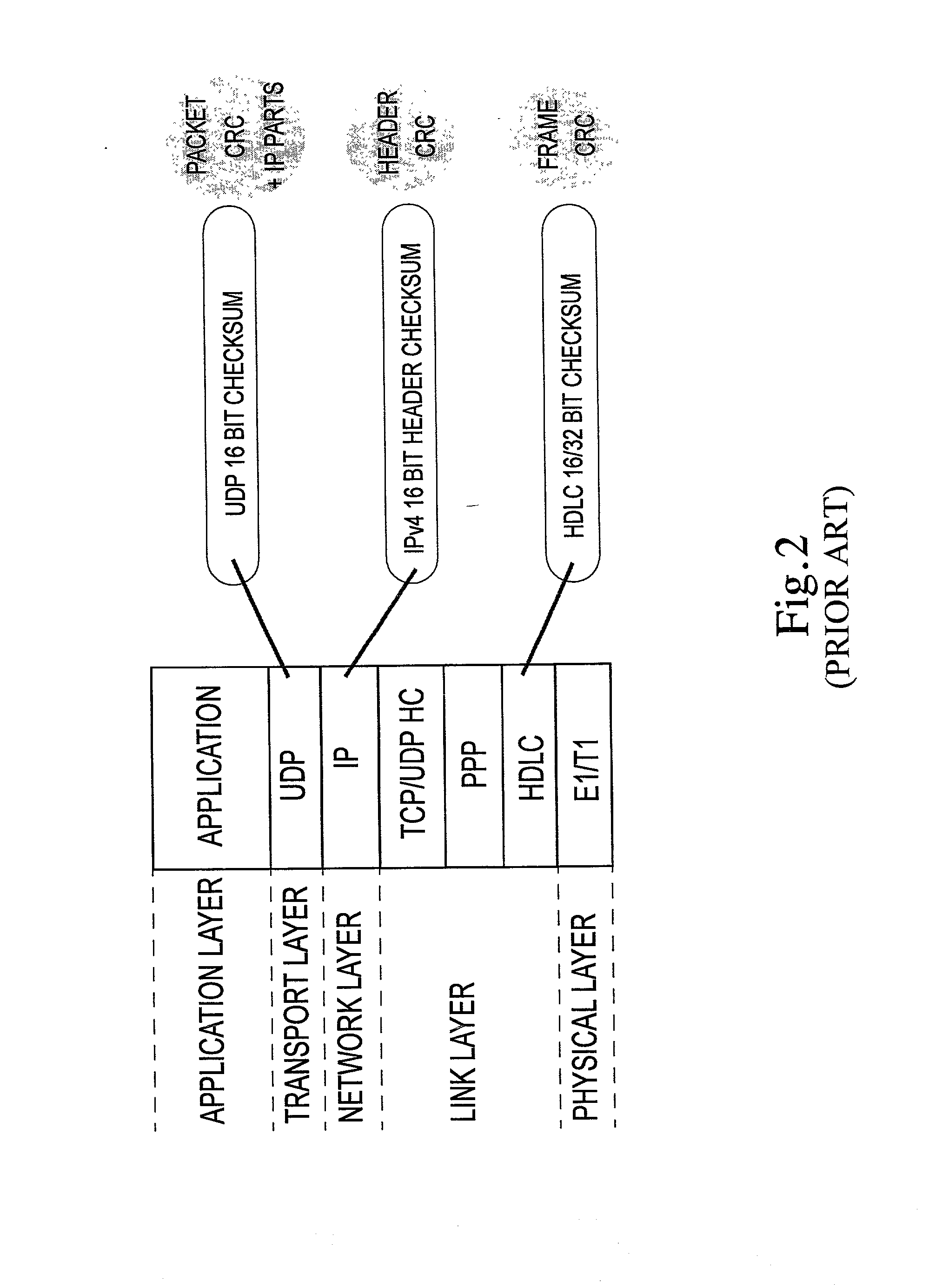Bit error resilience for an internet protocol stack
a bit error resilience and internet protocol technology, applied in the field of bit error resilience for internet protocol stacks, can solve the problems of inability to distinguish between errors in higher protocol headers, errors in important application parameters or errors in less important application parameters, and bad frames that can be detected
- Summary
- Abstract
- Description
- Claims
- Application Information
AI Technical Summary
Benefits of technology
Problems solved by technology
Method used
Image
Examples
Embodiment Construction
[0047] Throughout the drawings, the same reference characters will be used for corresponding or similar elements.
[0048] For a better understanding, the invention will now be described with reference to a particular example in which an IP protocol stack is running applications over a PPP / HDLC-based link layer. More specifically, in the following example it is assumed that the application is a delay-sensitive real-time application such as voice or video, and that the packet flows are transported using the UDP transport layer protocol. In order to improve the transmission efficiency, especially for links of low and medium speed such as radio or microwave links, the packets are header compressed using a suitable header compression technique (for example RFC 2507, RFC 2508, ROCCO or ROCH).
[0049] Reference Overview
[0050] FIG. 4 is a schematic drawing of a simple network from the protocol stack viewpoint. The network 10 comprises a first end system (IP host) 11 connected via conventional c...
PUM
 Login to View More
Login to View More Abstract
Description
Claims
Application Information
 Login to View More
Login to View More - R&D
- Intellectual Property
- Life Sciences
- Materials
- Tech Scout
- Unparalleled Data Quality
- Higher Quality Content
- 60% Fewer Hallucinations
Browse by: Latest US Patents, China's latest patents, Technical Efficacy Thesaurus, Application Domain, Technology Topic, Popular Technical Reports.
© 2025 PatSnap. All rights reserved.Legal|Privacy policy|Modern Slavery Act Transparency Statement|Sitemap|About US| Contact US: help@patsnap.com



